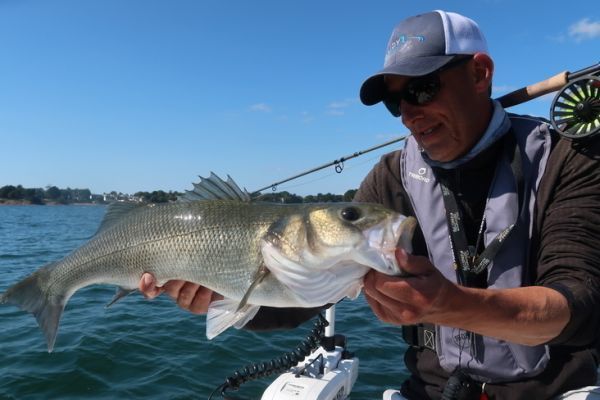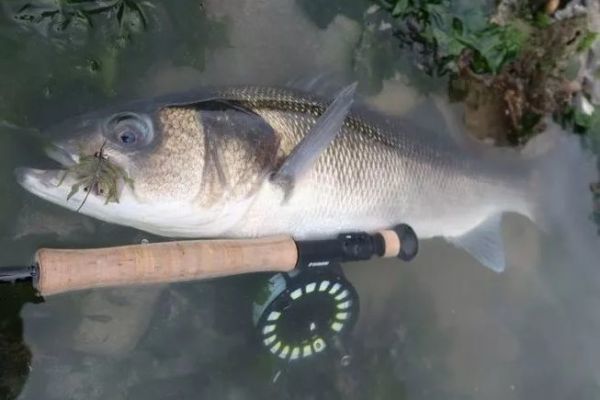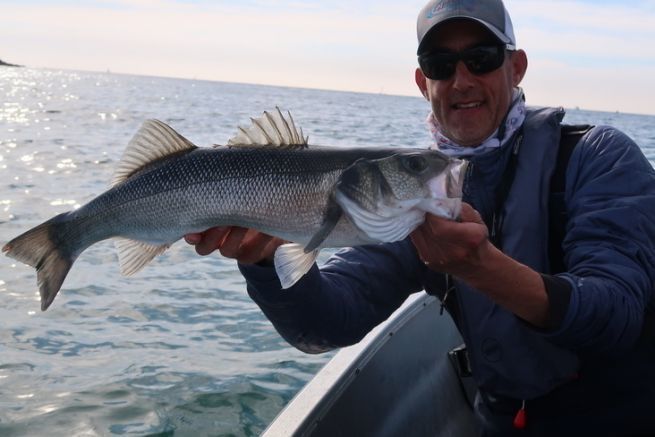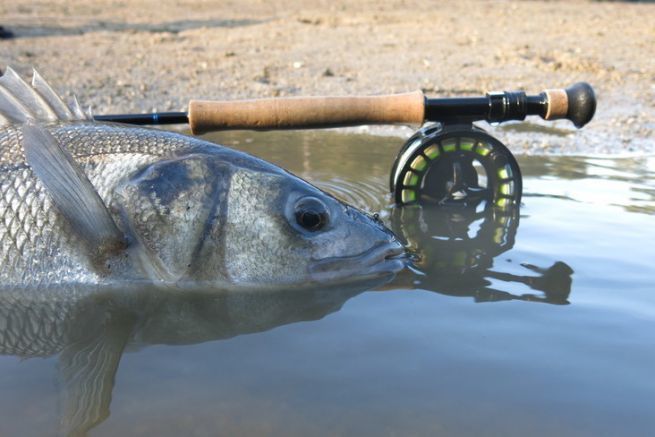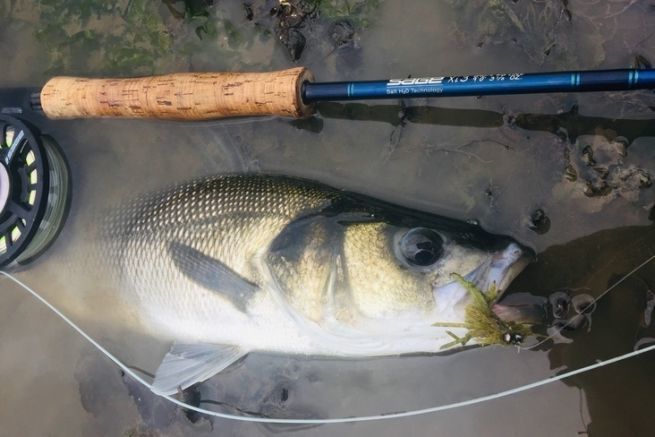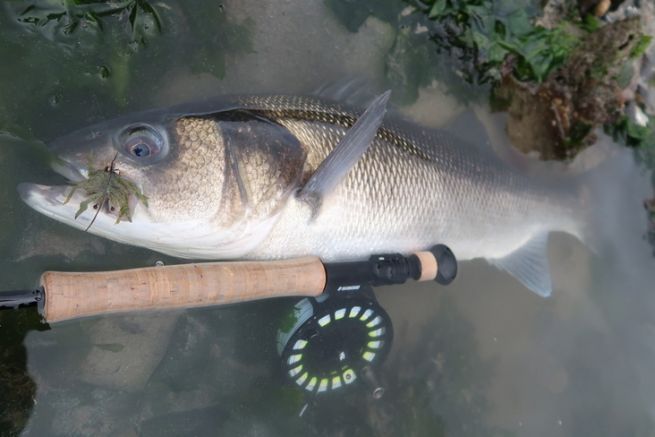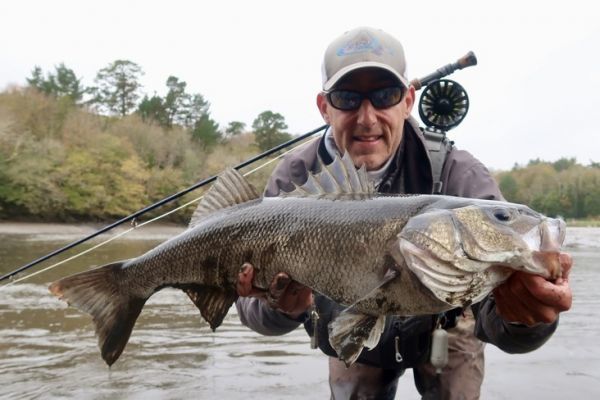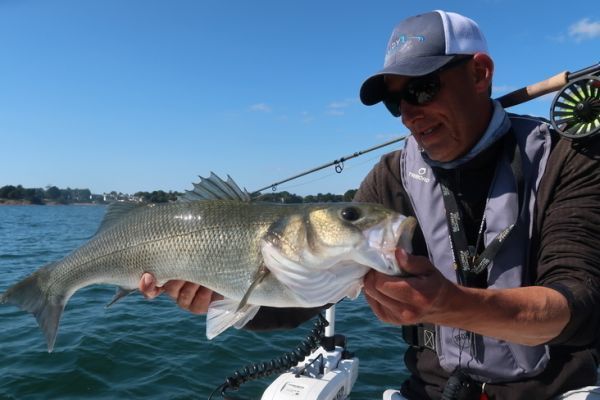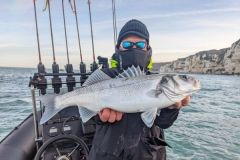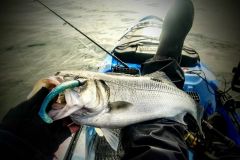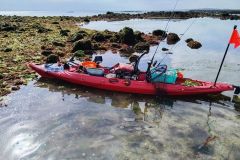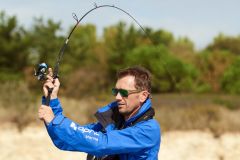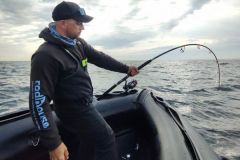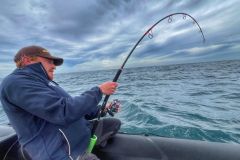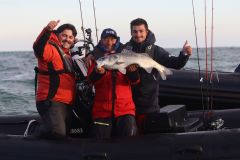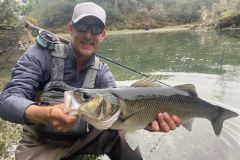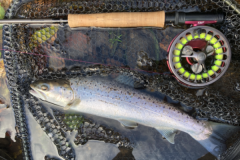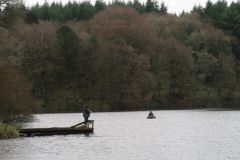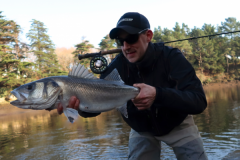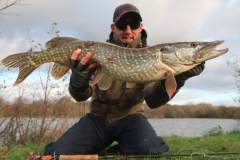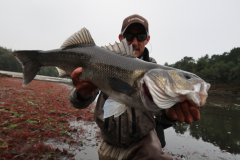Sea bass fishing with streamers
Sea bass is one of the fish I've been looking for most in Brittany for many years, whether from the shore or from a boat. Sea bass feed on a wide range of prey, whether at sea or in the estuary. You need to know their behavior and adapt to their diet to catch them regularly.
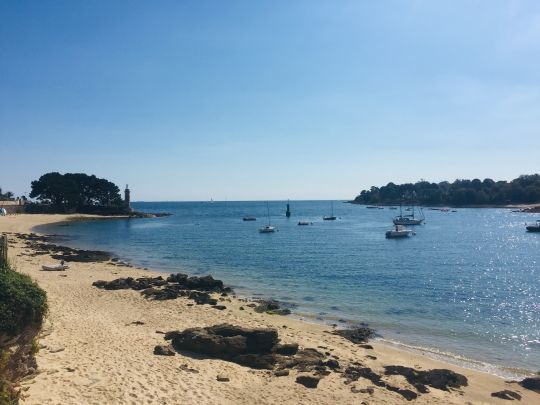
On the coast, sea bass often hunt in groups and seek out different species of fish, including sardines, sprats, sand eels, mullets, mackerel and horse mackerel.
So I tie flies from 8 to 15 cm, and sometimes more, in different colors to imitate his prey of the moment. Sometimes you have to change colors regularly to find what he likes. My favorite streamer is a white belly and olive back color, which has enabled me to catch many sea bass on the Brittany coast.
Chartreuse, gray and blue backs are also good values, but must be adapted to the prey of the moment.
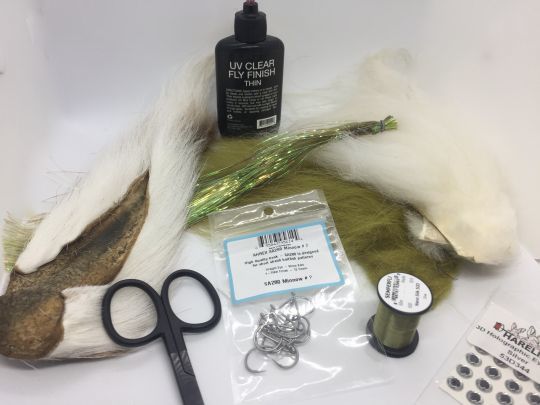
Materials for mounting this fly
- Ahrex Minnow SA 280 hook, size 2
- Mounting wire Nano silk 6/0 Olive
- Flashabou olive
- Loon UV resin
- White bucktail
- Nayat Olive and white
- Angle Hair pearl
- 3D eyes
- Cyano glue
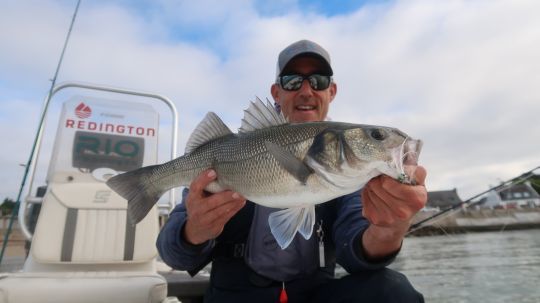
How to catch your first bass on the fly?
The sea bass is a marine predator that lives in less than a meter of water, especially in estuaries where it feeds on green crabs and shrimps, as well as at greater depths (over 40 m). It adapts to a wide range of environments.
On the streamer, I mainly use a Rio Striper intermediate line, adapted to my rod, which is a SAGE Salt HD 8 line or a SAGE Maverick 9 line, depending on conditions, especially wind strength. I sometimes use a sinking line when the current is stronger, or when the bass are reluctant to come up to fetch the fly close to the surface. In this case, I use a Rio Striper line in 300 to 450 grains.
You need to look for different places and types of position depending on the conditions, whether from the shore or by boat. However, a boat allows you to move more quickly from post to post, especially when hunting.
Beaches, bays, rocky points and plateaus are all places where bass can come to feed and hunt. A fishfinder can provide invaluable information on depth, bottom type and fish activity.
Mounted on a 27 to 32° fluorocarbon tippet (DFC 10 to 16 lbs), my streamer passes more or less quickly over the positions I've found during my outings and observations. I'm used to animating my flies fast enough to imitate the escape. Bites often occur at the pause or restart.
The presence of birds is always a good sign to pay attention to. A few stinging terns can indicate that prey is being pushed to the surface by predators.
The bite is often straightforward and the fish almost bites itself. A rod lift is all you need. Let your bass go during the first rush before reeling it in to prevent it from running into various obstacles.
For the future of our hobby, release the majority of your catches!

 /
/ 